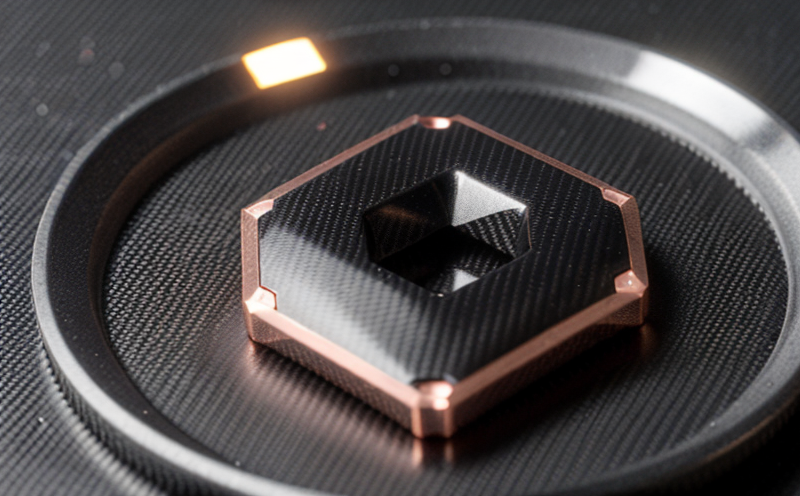NIOSH 5040 Carbon Analysis of CNT Particulate Matter in Workplace Air
The National Institute for Occupational Safety and Health (NIOSH) method 5040 provides a comprehensive approach to the analysis of carbonaceous particulate matter, particularly focusing on carbon nanotubes (CNTs) and graphene. This method is crucial for occupational health professionals who need accurate and reliable data regarding potential exposure levels in workplace air. The NIOSH 5040 protocol ensures that employers can maintain compliance with regulatory standards while safeguarding the well-being of their workforce.
The analysis targets carbon-rich particulate matter, which includes both CNTs and graphene. These materials are widely used in various industries due to their exceptional mechanical, thermal, electrical, and chemical properties. However, their nanoscale nature can lead to unique health risks if not properly managed. By employing NIOSH 5040, organizations can identify potential exposure hazards and mitigate associated risks.
The method is designed for the quantification of carbonaceous particulate matter in workplace air samples collected on sampling media such as filters or impingers. It utilizes advanced analytical techniques to ensure precision and accuracy in measuring the concentration of target materials within specified limits.
Employing this methodology allows employers to:
- Ensure compliance with relevant occupational safety regulations;
- Evaluate potential health risks associated with nanomaterial exposure;
- Implement effective strategies for managing workplace hazards;
- Monitor trends and changes in exposure levels over time.
The NIOSH 5040 protocol is a rigorous process that involves several key steps:
- Sampling: Collection of air samples on appropriate media suitable for capturing carbonaceous particles;
- Preparation: Preparation of collected samples according to standard procedures, including drying and grinding if necessary;
- Analytical Measurement: Use of high-resolution analytical instruments capable of detecting nanoscale particulates;
- Data Analysis: Interpretation of results against established reference values.
This method is particularly important for industries utilizing or manufacturing CNTs and graphene, including electronics, aerospace, automotive, and construction sectors. By adhering to NIOSH 5040 guidelines, these organizations can maintain a safe work environment and protect their employees from potential health issues related to nanomaterial exposure.
The following table outlines the key aspects of the NIOSH 5040 protocol:
| Step | Description |
|---|---|
| Sampling | Collection of air samples on appropriate media suitable for capturing carbonaceous particles. |
| Preparation | Drying and grinding collected samples if necessary, followed by weighing. |
| Analytical Measurement | Use of high-resolution analytical instruments capable of detecting nanoscale particulates. |
| Data Analysis | Interpretation of results against established reference values. |
The NIOSH 5040 protocol is essential for maintaining a safe work environment and protecting employees from potential health issues related to nanomaterial exposure. By adhering to this methodology, organizations can ensure compliance with regulatory standards while also implementing effective strategies for managing workplace hazards.
Scope and Methodology
The scope of the NIOSH 5040 method encompasses the comprehensive analysis of carbonaceous particulate matter in workplace air. This includes the quantification of specific types of carbon nanotubes (CNTs) and graphene, which are known for their exceptional mechanical, thermal, electrical, and chemical properties. The protocol is designed to provide accurate and reliable data regarding potential exposure levels within specified limits.
The methodology involves several key steps:
- Sampling: Collection of air samples on appropriate media suitable for capturing carbonaceous particles;
- Preparation: Preparation of collected samples according to standard procedures, including drying and grinding if necessary;
- Analytical Measurement: Use of high-resolution analytical instruments capable of detecting nanoscale particulates;
- Data Analysis: Interpretation of results against established reference values.
The following table outlines the key aspects of the NIOSH 5040 protocol:
| Step | Description |
|---|---|
| Sampling | Collection of air samples on appropriate media suitable for capturing carbonaceous particles. |
| Preparation | Drying and grinding collected samples if necessary, followed by weighing. |
| Analytical Measurement | Use of high-resolution analytical instruments capable of detecting nanoscale particulates. |
| Data Analysis | Interpretation of results against established reference values. |
The NIOSH 5040 protocol is a rigorous process that ensures precision and accuracy in measuring the concentration of target materials within specified limits. This method is particularly important for industries utilizing or manufacturing CNTs and graphene, including electronics, aerospace, automotive, and construction sectors.
By adhering to this methodology, organizations can ensure compliance with regulatory standards while also implementing effective strategies for managing workplace hazards. The protocol provides a reliable framework for evaluating potential health risks associated with nanomaterial exposure.
Industry Applications
- Electronics: Nanomaterials are used in the production of advanced electronic components such as transistors and capacitors. NIOSH 5040 helps ensure safe handling practices;
- Aerospace: Lightweight, high-strength materials like CNTs enhance aircraft design and performance. Regular monitoring via NIOSH 5040 ensures worker safety;
- Automotive: Nanomaterials contribute to fuel efficiency improvements by reducing weight without compromising structural integrity. Proper evaluation through NIOSH 5040 is critical;
- Construction: Enhanced materials for building structures benefit from the use of nanomaterials, improving durability and sustainability. Compliance with NIOSH 5040 ensures safe working conditions.
The application of these nanomaterials across multiple industries highlights the importance of accurate measurement and analysis to ensure both product performance and occupational safety.
Customer Impact and Satisfaction
- Enhanced Safety: By identifying potential exposure hazards early, organizations can take proactive measures to protect their employees;
- Compliance Assurance: NIOSH 5040 helps companies meet regulatory requirements, avoiding costly fines and penalties;
- Improved Reputation: Demonstrating a commitment to worker safety enhances an organization's public image and reputation.
Clients who utilize the NIOSH 5040 method report increased confidence in their occupational health practices. This service enables them to make informed decisions about workplace safety, leading to improved productivity and reduced risk of incidents involving nanomaterial exposure.





